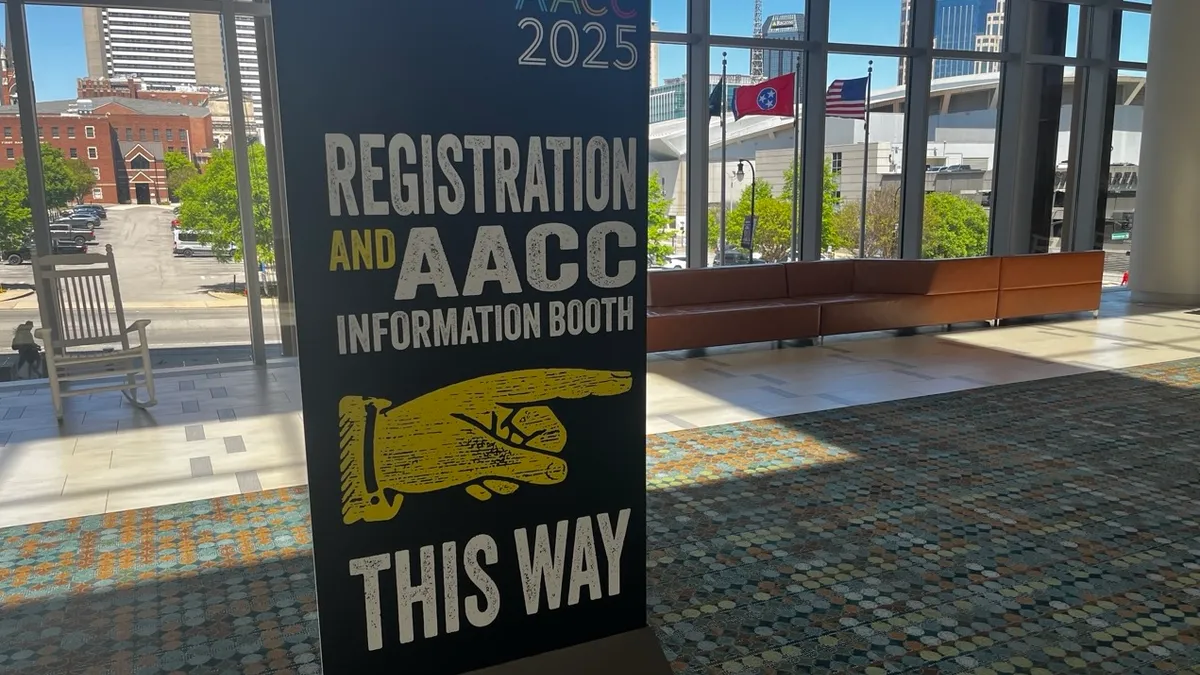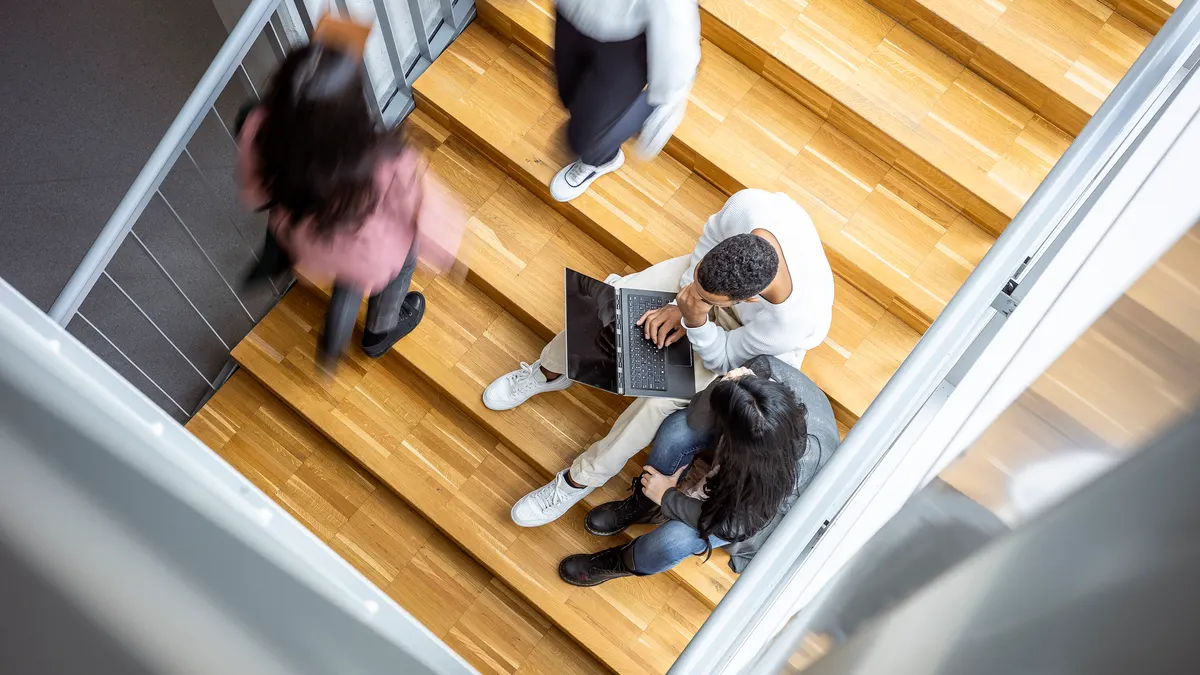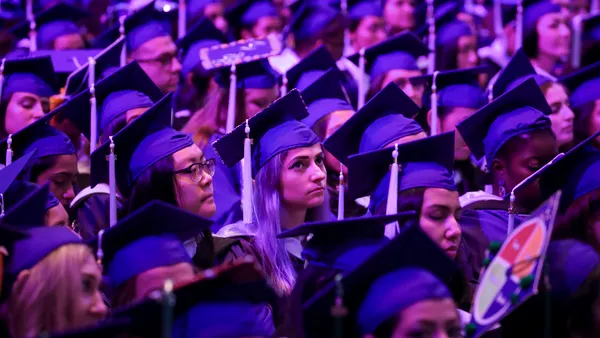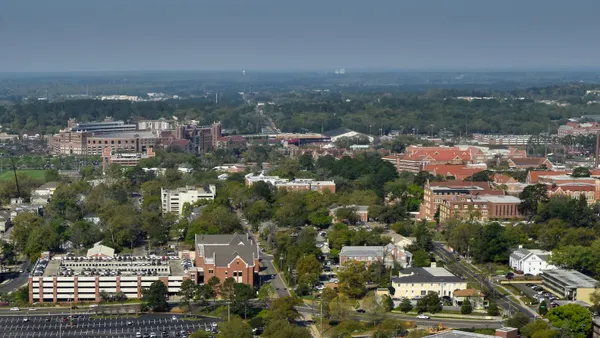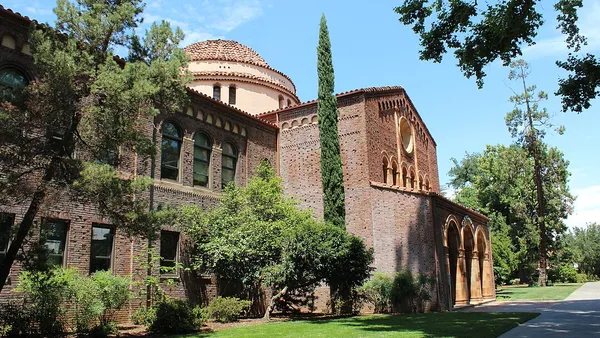NASHVILLE – When planning for the future, community colleges often solicit input from various stakeholders. But students have a reputation for being tricky to pin down through colleges' tried-and-true method of repeated emails.
At the American Association of Community Colleges’ annual conference last week, leaders at two institutions shared their experiences trying new outreach methods and engaging students in the planning process. Engaging students directly allows them to share insights into how new initiatives could boost their retention or get them in the door of existing support services.
"I thought this was an AI chatbot or something"
When Jesse Pisors became president of Pasco-Hernando State College in February 2024, his administration kicked off an extensive listening tour. Over three months, he held 55 one-hour listening sessions across the college's five Florida campuses.
The college also distributed an institutional survey that asked open-ended questions to students and employees, allowing respondents to remain anonymous or include their contact information for further follow-up.
Of the 47 students who completed the survey, 55% included their contact info. Pisors personally emailed them all.
"Somebody said, 'Oh, wow, I'm amazed. I thought this was an AI chatbot or something. I didn't really think I was talking to the president,'" Pisors told conference attendees. It's those moments, he added, that colleges can build trust with their communities.
The survey revealed students' desire for more food options on campus.
As a result, Pasco-Hernando State established new food service options at a majority of its campuses in August. The college also converted unused campus space into more student lounges.
Students also requested that campus leaders streamline the admissions and registration processes.
"Many times I have no idea what I am actually applying for and what classes I even need," one student said in the online survey.
The college is still working to address these challenges, according to Pisors.
"There's a lot of things that came up that we're not going to solve overnight," he said, adding that addressing some student concerns will require multi-year endeavors.
During that time, it's key to be transparent and communicate with students so they know that they've been heard, he said.
"If you ask for feedback and people get the sense that you're not taking it seriously, you actually have less trust than if you just never had asked in the first place," Pisors said.
Students and faculty alike called for improved communication from the administration, he said.
Along with regular campus emails, Pisors now publishes regular presidential updates on YouTube.
The administration sought to vary its communication methods because, according to Pisors, the consensus was: "'Really? One more long email? Does anybody really need that?'"
"Solving a communication problem isn't just more communication," Pisors said. "Sometimes it's better communication."
The college's marketing department also issues weekly news updates with embedded polls to collect further feedback.
Meeting students where they are
To better engage students in institutional planning, Carroll Community College, in Maryland, reached them on their home turf — social media.
Rosalie Mince, president of Carroll, wanted to get feedback from the college's constituencies to guide its institutional planning. To reach students, Carroll enlisted students to serve as social media ambassadors to promote a college-wide survey, along with other student success services.
The ambassadors, often digital natives, ran with it, creating funny reels and memes, Mince said.
"They got a great response," she said. "Helping students ask each other to be part of things is a really smart way to go."
Fun and frequent messaging about the survey yielded high levels of feedback — 1,128 of Carroll's roughly 3,200 students responded to the poll.
Carroll leaders learned from the survey that students were dissatisfied with the campus bookstore’s prices, a nationwide problem. So they implemented an initiative to promote the use of free and open education resources in classes.
As the college increased its use of social media, student visits to the academic center also jumped, according to Kristie Crumley, Carroll's dean of faculty and vice president of academic and student affairs.
When asked, students didn't credit their more frequent visits to traditional outreach such as orientation or campus posters.
"It was social media that got them to walk into the academic center," Crumley said.
Carroll also has a long-standing tradition of including students on college committees. This allows them to learn about how the institution runs while giving administrators a chance to get direct student feedback, according to Mince.
"They don't just sit there quietly — they are very active participants," she said. "They become more and more comfortable throughout the semester acting as an equal in these committees."
For students who may be less engaged, Carroll administrators use software that allows students to submit feedback and "raise their hands" for help, Crumley said.
They quickly realized students often requested relatively small amounts of money to cover one-time, out-of-classroom expenses.
"Sometimes it's $300, which for those of us with a full-time job doesn't feel like life-changing money," Crumley said. "But it is for our students."
Based on that feedback, the college received support from the Carroll Community College Foundation to establish an emergency assistance fund.
Besides being beneficial for students, the fund is a big retention tool, according to Crumley.
"Lots of our students are a flat tire away from having to drop out of school," she said.


